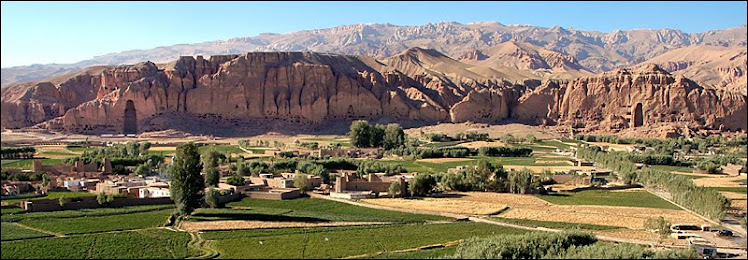And yet, she says, "I felt lucky compared to other women at that time." Women were banned from continuing their education during Taliban rule. But some, like Farzana, found ways to keep studying. She would carry books under her burqa and attended what she calls an "underground school" with about 300 other students in a residential area of Kabul.
"Day by day, as I started learning about photography, I fell more in love with it," she says. "There was a huge need for women photographers in Afghanistan."
An Afghan girl blows bubble gum while cooking for her family in Kabul, 2007.
"I try to show the bigger image, not just show we have problems," she says. "And we do have a lot of problems, but I do want to show normal daily life."
Wahidy focuses on women. "This subject was important to me because I am a woman," she says, recognizing an advantage that gives her. When she wants to document their lives, "it's easier for a woman to get access," she says.
Her photos of daily life range from men selling balloons on the streets to the secret lives of female prostitutes. And Wahidy was not the only one to recognize the need for this type of photography in Afghanistan. She is now part of the recently created Afghan Photography Network.
"Many Afghan photographers are not well-connected," she explains. "We hope it will create a better connection and show Afghanistan by Afghan photographers."
It is a young website, still in development, but the Afghan Photography Network is already bringing increased visibility to the work of Afghan photographers.
Of the eight women in her original photojournalism program, Wahidy is the only one working as a full-time photographer. Some got married, and others stopped working for reasons unknown to Wahidy. Wahidy, meanwhile, plans to continue for a very long time.
"When I shoot and I get a good photo," she says, "that is a beautiful day."
Two Afghan women clad in burqas whisper in a shop in Kabul, 2007. Despite advances in women's rights since the fall of the Taliban, most Afghan women, especially outside the capital, still opt for the all-enveloping cloak.
Afghans feed pigeons at the Shrine of Hazrat Ali in northern Afghanistan, 2009
An unidentified Afghan prostitute fixes her headscarf to cover her face in Kabul, 2008. Afghanistan is one of the world's most conservative countries, yet its sex trade appears to be thriving.
An Afghan policeman is seen through a hole at a police checkpoint on the outskirts of Kabul, 2007.
An Afghan girl brushes her hair in Kabul, 2007.
Boys play on a water pipe in a cemetery in Kabul, 2007
An Afghan girl bathes her brother near a building where refugees live in Kabul, 2007.
Abdul Malak, who lost his leg in a mine blast during grazing, stands on a prosthetic limb — with his daughter nearby — in a Parwan province village north of Kabul, 2008.
Laila, 7, works on homework in her home in Kabul, 2008
Arazo, 19 (from right), Tabasum, 20, and Shamayal, 25, who fled from abusive family members, stand for a picture in Kabul, 2009.
An Afghan boy selling balloons waits for customers in Kabul, 2009.
Afghan women kiss Shiite religious flags during Ashura in Kabul, 2009.
Ten-year-old Nahid grabs a thread while weaving carpet in her home in Kabul, 2010. Carpets, made mostly in the country's north, are one of Afghanistan's few major exports.
A photograph taken from behind a burqa, Kabul, 2007

No comments:
Post a Comment